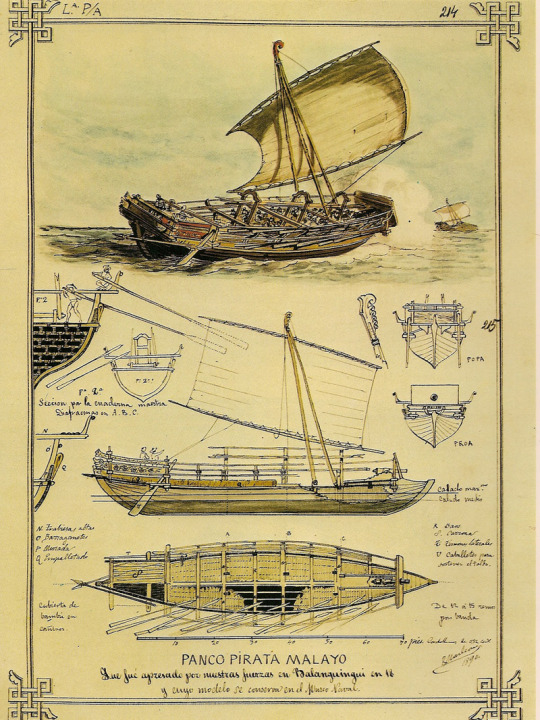#Zélée (Ship)
Explore tagged Tumblr posts
Text
3rd Thursday
Squally with light Showers of rain. Went onshore to wash. Saw Some beautifull P in the bush. In looking round, fell in with the Grave of a Frenchman with a cross over it and the following inscription in french:
"Cigit" Armand Francois - Regnt. Mort le 14 Mai 1839 -
cut [in] the cross. The Doctor Shot a fine Wild Sow which appeared to have recently been giving Milk. Came on to blow very hard in the Evening with rain and Sleet: wind continued all night.
Campell's Notes:
P___, space left blank
Cigît = Here lies. Regnt (régiment) possibly meaning a serviceman, or it might be Negnt standing for Négociant = Merchant. Two French whaling expeditions from Le Havre were in this area in 1839, one commanded by Antoine Le Bailly in the Manche which visited the Auckland Islands working out of Port Ross (the modern name of the bay in which Erebus and Terror were anchored), and the other under James Walch and Alphonse Doucet in Adèle and Harmonie, which constructed a hut in Port Ross. Headland, Chronological List, p. 146. It would seem probable that Armand Francois was from one of these expeditions, since the only other possible expedition, that of Dumont D’Urville in Astrolabe and Zélée was not in this area in May 1839.Doctor, presumably John Robertson the ship’s surgeon, although it might have been the assistant surgeon David Lyall.
2 notes
·
View notes
Text
The Garay
A garay was originally an oared boat used by the natives of the Philippines before being used by the pirates who settled there in the 18th and 19th centuries. The Garay was fast and had a flat hull to operate in shallow waters. In appearance, the garay resembles the Swedish galleys of the archipelago fleet or a small war galley of the Mediterranean. In the end, it is nothing else. A garay was a slave-rowed narrow boat made of wood, bamboo, rattan and nipa, she was about 20 metres long with a bamboo main mast carrying a square sail that was hoisted slightly offset. She could also had a foremast and sometimes a mizzen mast, rigged with smaller triangular crab claw sails.

Garay sketches by Rafael Monleón y Torres (1890) (x)
Depending on size, a Garay had a crew of 30-80 men. It was led by a nakura or nakuda (commander), who in turn was led by a squadron leader, the panglima. The julmuri (first mate) is responsible for the crew and also controls the helm (bausan). Another mate, the julbato, stays at the bow of the ship and keeps a lookout for reefs and enemy ships. The julbato is also responsible for the anchor (sao).

Garay anchored in Sulu, from: The Voyage au Pôle Sud et dans l'Océanie sur les corvettes L'Astrolabe et La Zélée by Jules Dumont d'Urville (1846)
The armament was mostly one cannon and relied mainly on boarding the enemy quickly to defeat them with the small arms of the crew. So it was similar to what the pirates of the Mediterranean did.
168 notes
·
View notes
Photo

The Astrolabe Caught in the Antarctic Ice near Adelie Coast by Ambroise-Louis Garneray (1783-1857)
In 1837, the ships Astrolabe and Zélée left Toulon under the command of Jules-Sébastien-César Dumont d'Urville. Their task was to conquer the Magnetic South Pool for France. But the French were not lucky. After the ship had crossed the Strait of Magellan, the expedition reached the pack ice at 63°29’S and 44°47'W. The ship was then in the middle of the Magellan Strait. However, the bad equipment did not allow sailing in the pack ice, the ships got stuck in the ice and had to be made afloat again with difficulty. While the ships sailed over 300 miles along the pack ice border and discovered the Joinville Islands, Louis-Philippe Land and Astrolabe Island, half the crew fell ill with scurvy, and after the two ships had made it back to Chile with their last strength, many crew members deserted.
The following winter, d'Urville of Hobart, Tasmania, started the second attempt to penetrate Antarctica in the hope of finding the magnetic south pole, which was believed to be in the undiscovered area between the 120th and 160th longitude. This time the journey was happier and d'Urville discovered Adélieland, lying on the Antarctic continent and claimed by France since then, where one station still bears his name today. He named the area after his wife Adèle Dorothée née Pépin (1798-1842).
His return took him around the world for the third time via New Guinea and St Helena in the Atlantic. On 6 November 1840, after three years and two months, the two ships returned to their home port of Toulon. D'Urville was promoted to Rear Admiral and the Geographical Society awarded him its highest distinction. The report about this trip was entitled: Voyage au Pole Sud et dans l'Océanie, 1837-1840. The government presented the 130 survivors with a special bonus of 150,000 gold francs.
169 notes
·
View notes